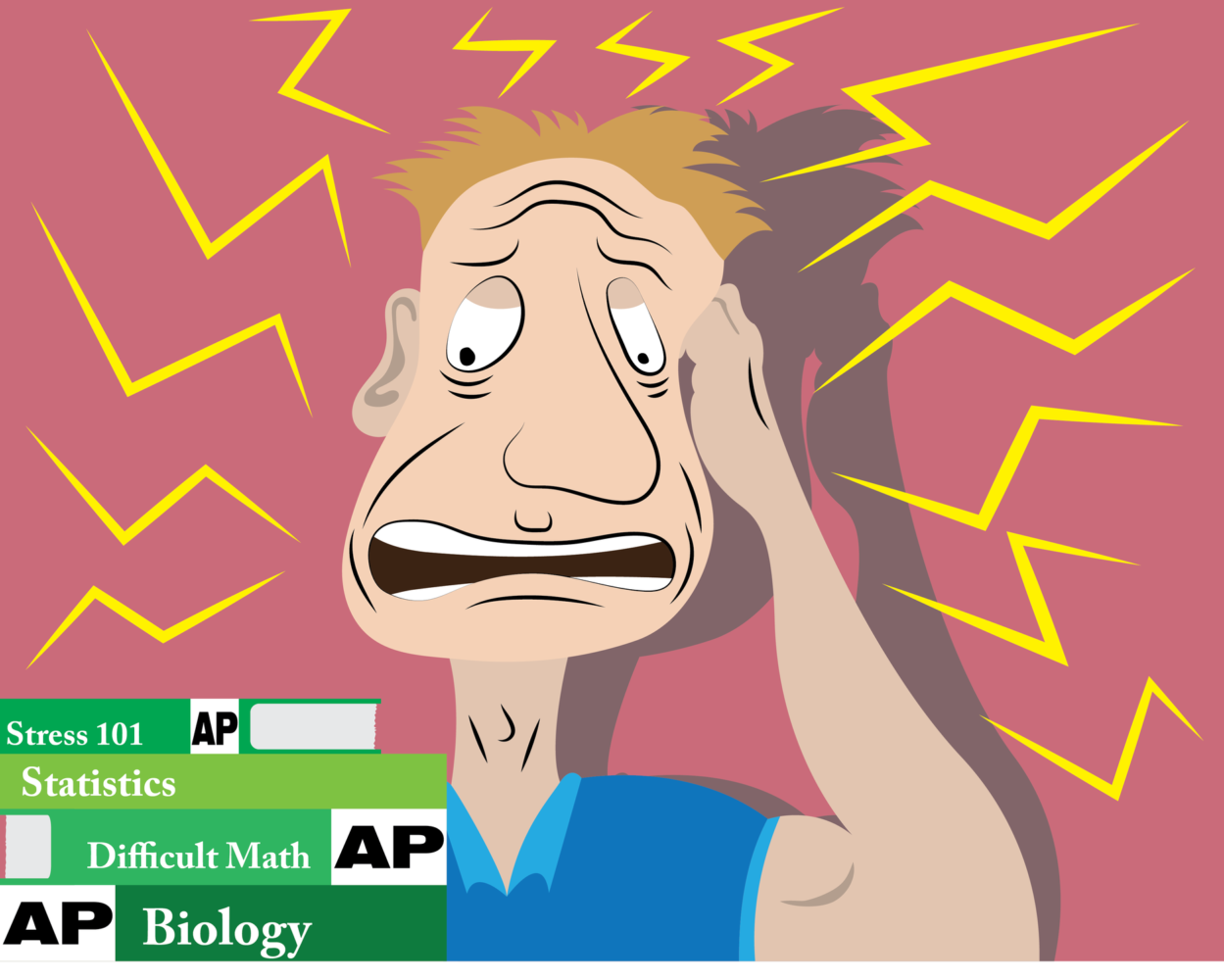CAP the AP (with video)
How limiting AP classes can limit stress, encourage interests
While AP classes are a good way to earn college credit or challenge yourself, students often pile them on to the point where they forget their true meaning. Placing a cap on the number of AP classes one can take each year provides a way for students to be more cognizant of their schedule choices.
April 28, 2017
Studying through the night, stressing out during the school day and having limited free time are some of the many obstacles faced by students taking multiple of AP classes.
AP, or Advanced Placement, is a program through The College Board that most schools in the United States and Canada have available to their students. Around 60 percent of high schools in the United States offer AP classes.
Ranging from sciences and maths to history and arts, the 35 AP classes offered by The College Board allow students in high school to earn college credit or qualify for a more advanced version of a particular class once they go to college.
To earn college credit for an AP class, a student must take the AP exam for that class, which is administered in May, and receive a score of at least a 3 out of 5. There is no guarantee, however, that students will receive credit on their AP exams, as it is dependent on the college they are planning to attend.
The appeal behind taking such classes is to stand out as a strong student for college admissions, save some money by completing a class before college and take on a challenge in a class of interest.
With AP exam season creeping up on us, it is a good time to talk about the dynamic that AP classes play in our lives at Coppell High School.
The weighted GPA system, which awards students a higher GPA based on the level of class they are taking, plays a significant role in a student’s class decisions.
Because of this, the words “easy AP”, “blow-off class” and “GPA booster” have become commonplace in our halls.
Students have forgotten the purpose of AP, which is to pursue classes of interest, be challenged and earn some college credit as a bonus.
Rather than signing up for classes in areas of interest, many get blinded by the numbers and letters on their transcript that they forget the importance of exploring their interests in high school.
In Coppell, it is common for freshmen to take one AP class, with that number doubling or even tripling by the time they reach sophomore and junior years. Some students end up taking a schedule filled with all AP classes by the time they reach their senior year (some even opting to take eight periods by adding a zero hour).
The amount of time and commitment that goes into AP classes is very rigorous and can be, at times, overwhelming, especially for those who have so many to stay on top of.
Proposing a system which caps the number of AP courses a student can take depending on their grade in high school can help ensure that students become well rounded in more than just academics and lead manageable lives.
For many, this sounds like a measure that will hinder one’s ability to get into their college of choice.
Alongside your application, college admissions counselors receive a report with information about your high school. Things such as your class size, average GPA and courses offered will be included, meaning that the counselors will be indicated if your school caps your AP classes.
Because this would apply to the entire student body, no one would be at more of an advantage than another.
Furthermore, students will have the freedom to put time into their extracurriculars, hobbies and even just sleep.
But until then, individual measures can be taken to combat this issue.
As the deadline inches closer to confirm next year’s classes, I encourage you to take a look at your schedule and reevaluate the choices. Add that class you have always been curious about.
Being honest with yourself about your capabilities, interests and goals can help you formulate the right schedule for you.
Follow Fiona on Twitter @fionakoshy10










